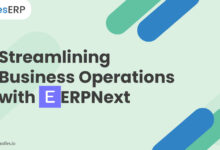Salesforce CRM Pricing: Unveiling Plans, Features, And Comparisons
At the forefront of business solutions, Salesforce CRM pricing stands as a crucial factor in decision-making. Delve into the intricacies of pricing plans, features, and competitor analyses in this comprehensive guide.
Overview of Salesforce CRM Pricing
Salesforce CRM offers several pricing plans to cater to the needs of different businesses. Each plan comes with its own set of features and benefits, ensuring that users can choose the one that best fits their requirements and budget.
Essential Plan
The Essential Plan is the basic package offered by Salesforce CRM. It includes essential features such as contact management, lead management, opportunity management, and customizable dashboards. This plan is ideal for small businesses or startups looking to get started with CRM.
Professional Plan
The Professional Plan is designed for growing businesses that require more advanced features. In addition to the features included in the Essential Plan, the Professional Plan offers additional functionalities such as workflow automation, collaborative forecasting, and integration with third-party apps.
Enterprise Plan
The Enterprise Plan is suited for larger organizations with complex sales processes. It includes all the features of the Professional Plan, along with advanced analytics, lead scoring, territory management, and mobile access. This plan is ideal for companies looking to scale their CRM operations.
Unlimited Plan
The Unlimited Plan is the most comprehensive package offered by Salesforce CRM. It includes all the features of the Enterprise Plan, as well as unlimited support and online training. This plan is perfect for enterprise-level businesses that require a high level of customization and support.
Discounts and Special Offers:
Salesforce CRM often runs promotions and discounts for new customers or existing users looking to upgrade their plans. These discounts can vary depending on the time of year or specific promotions being offered. It’s always a good idea to check the Salesforce website or contact their sales team to inquire about any current deals or special offers available.
Factors Affecting Salesforce CRM Pricing
When it comes to determining the pricing of Salesforce CRM, several key factors come into play. Understanding these factors can help businesses make informed decisions regarding their CRM investment.
Number of Users Impact
The number of users accessing the Salesforce CRM platform directly impacts the overall cost. Typically, the more users a business needs to onboard, the higher the subscription fees will be. This is because Salesforce charges on a per-user basis, meaning each additional user adds to the total cost.
Customization and Add-On Features
Customization and add-on features can significantly impact the pricing of Salesforce CRM. Businesses that require extensive customization to tailor the CRM to their specific needs may incur additional costs. Similarly, opting for add-on features like advanced analytics or integration with third-party applications can also increase the overall price of the CRM subscription.
Pricing Comparison with Competitors
In this section, we will conduct a detailed analysis comparing the pricing structure of Salesforce CRM with at least three other leading CRM platforms in the market. We will showcase the different pricing tiers, features included, and any additional costs for each CRM platform. Additionally, we will evaluate the strengths and weaknesses of Salesforce CRM pricing model in relation to its competitors, highlighting any unique pricing strategies or advantages. Finally, we will provide a summary of key insights on how Salesforce CRM pricing positions itself in the market and what sets it apart from its competitors.
Competitor 1: Microsoft Dynamics 365
Microsoft Dynamics 365 offers various pricing tiers, including Sales, Customer Service, Field Service, and more. Each tier comes with different features and capabilities, with additional costs for add-ons and customizations.
Competitor 2: HubSpot CRM
HubSpot CRM provides a free version with limited features and functionality, as well as paid plans with advanced features like marketing automation, sales automation, and customer support tools. The pricing is based on the number of contacts and users.
Competitor 3: Zoho CRM
Zoho CRM offers multiple pricing options, including Standard, Professional, Enterprise, and Ultimate editions. Each edition caters to different business needs and includes features like lead management, sales automation, and analytics tools.
Comparison Summary
After analyzing the pricing structures of Salesforce CRM, Microsoft Dynamics 365, HubSpot CRM, and Zoho CRM, it is evident that Salesforce CRM positions itself as a premium solution with a wide range of features and customization options. While competitors like HubSpot CRM offer a free version, Salesforce CRM stands out with its scalability, integration capabilities, and robust customer support. Salesforce CRM’s pricing model may be higher than some competitors, but the value it provides in terms of functionality and support sets it apart in the market.
Hidden Costs and Additional Fees
When considering Salesforce CRM pricing, it’s important to be aware of any hidden costs or additional fees that may impact your overall budget. These extra expenses can come from various aspects of implementation, training, and ongoing support services. Understanding these factors can help you budget effectively and avoid any unexpected costs down the line.
Implementation Costs
- Initial setup and customization of Salesforce CRM may require additional fees, especially if you need tailored solutions for your business.
- Integration with existing systems or data migration can also incur extra costs, depending on the complexity of the process.
- Consulting services or hiring external experts for implementation support may add to the overall expenses.
Training Expenses
- Training your employees to use Salesforce CRM effectively can be a significant cost factor, especially if you opt for personalized training programs or certifications.
- Onboarding new team members or providing ongoing training sessions may add up over time, impacting your budget.
- Consider utilizing online resources or self-paced training modules to reduce training expenses.
Support Service Fees
- Subscription plans may include basic support services, but additional help or dedicated support options may come with extra fees.
- Emergency support or troubleshooting services may incur additional costs, especially if you require immediate assistance from Salesforce experts.
- Factor in ongoing support fees when budgeting for Salesforce CRM to ensure you have adequate resources for any future needs.
Pricing Models and Payment Options
When it comes to Salesforce CRM, there are various pricing models and payment options available to cater to the diverse needs of businesses. Let’s explore the different options and how they can benefit organizations.
Subscription-based Pricing
Subscription-based pricing is a popular model where users pay a fixed monthly or annual fee to access the Salesforce CRM platform. This model provides predictability in costs and allows for scalability as the business grows.
Pay-per-User Pricing
Pay-per-user pricing, on the other hand, charges a fee based on the number of users accessing the CRM system. This model is ideal for businesses with fluctuating user numbers and offers more flexibility in terms of costs.
Advantages and Disadvantages of Each Pricing Model
- Subscription-based Pricing:
- Predictable costs
- Scalability
- May result in paying for unused licenses
- Pay-per-User Pricing:
- Flexibility in costs
- Cost-efficient for small teams
- Costs can increase as the team grows
Cost Breakdown Comparison
| Subscription-based Pricing | Pay-per-User Pricing |
|---|---|
| Fixed monthly or annual fee | Cost per user per month |
| Includes unlimited users | Cost varies based on user count |
| May result in paying for unused licenses | Cost-efficient for small teams |
Customization Options in Salesforce CRM Pricing
Salesforce CRM offers customization options to tailor pricing plans to match specific business needs. This includes add-on features, integration options, and personalized support packages.
Choosing the Most Cost-Effective Pricing Model
For a small business looking to optimize costs with Salesforce CRM, follow these steps:
- Evaluate the size of your team and predict future growth
- Consider the flexibility needed in your pricing plan
- Assess the budget allocation for CRM software
- Consult with Salesforce representatives for personalized recommendations
Customization and Scalability
When it comes to Salesforce CRM, customization and scalability play a crucial role in shaping the overall cost implications for businesses. Let’s delve into how these factors can impact pricing and what options are available for companies to tailor their CRM solutions effectively.
Level of Customization Impact
Customization in Salesforce CRM can significantly impact the overall cost for a company. The more tailored features and functionalities a company requires, the higher the cost will be. Salesforce offers various customization options, such as custom objects, fields, workflows, and reports, each adding to the pricing structure based on the extent of customization chosen.
- Basic customization options: These include standard features and configurations that come with Salesforce out of the box. They are usually included in the base price of the CRM.
- Advanced customization options: Companies looking to tailor Salesforce CRM to fit specific business requirements can opt for advanced customization features. These may involve additional costs, such as hiring Salesforce developers or purchasing custom development services.
- Enterprise-level customization: For large enterprises with complex needs, Salesforce offers extensive customization capabilities that can involve higher costs due to the level of expertise and resources required to implement them.
Scalability Options and Pricing Implications
Scalability in Salesforce CRM refers to the ability to easily scale up or down in terms of user numbers, features, and storage capacity based on business needs. The scalability options available can influence the long-term costs for businesses.
- Scaling up: Increasing user licenses, adding new features or modules, and expanding storage capacity can lead to additional costs as companies move to higher-priced Salesforce editions or pay for additional resources.
- Scaling down: Conversely, reducing user licenses, streamlining features, or decreasing storage capacity can result in cost savings by downgrading to a more cost-effective Salesforce plan.
Role of Third-Party Integrations
Third-party integrations play a crucial role in customizing Salesforce CRM and extending its functionality. While these integrations can enhance the user experience and improve efficiency, they can also impact pricing.
- Cost-effective integrations: Companies can select from a wide range of cost-effective third-party apps or tools to enhance Salesforce CRM without significantly increasing expenses. These integrations can provide additional features and capabilities at a fraction of the cost of custom development.
- Potential cost implications: It’s important to consider the potential cost savings or additional charges that may arise from integrating external solutions with Salesforce CRM. Some integrations may require subscription fees or one-time payments, which can add to the overall cost of using Salesforce.
ROI and Cost Benefit Analysis
Investing in Salesforce CRM can yield a significant return on investment (ROI) for businesses. By calculating the ROI, companies can determine the financial benefits of implementing Salesforce CRM compared to the costs involved. Conducting a cost benefit analysis before choosing a pricing plan is crucial to ensure that the investment aligns with the organization’s goals and budget.
Calculating ROI
- Calculate the total cost of implementing Salesforce CRM, including subscription fees, customization costs, and training expenses.
- Determine the expected benefits, such as increased sales, improved customer satisfaction, and reduced operational costs.
- Use the formula:
ROI = (Net Profit / Total Cost) x 100
- Consider intangible benefits like enhanced productivity and streamlined processes.
Importance of Cost Benefit Analysis
- Helps businesses evaluate the financial impact of Salesforce CRM on their operations.
- Ensures that the benefits outweigh the costs, leading to a positive ROI.
- Assists in making informed decisions regarding the choice of Salesforce CRM pricing plan.
Examples of ROI Success
- A manufacturing company saw a 30% increase in sales after implementing Salesforce CRM, resulting in a 5x ROI within the first year.
- A service-based business reduced customer service response time by 50% and saved $100,000 annually, achieving a 3.5x ROI.
- An e-commerce company improved customer retention by 20% and increased average order value by 15%, leading to a 4x ROI in six months.
Negotiating Salesforce CRM Pricing
When it comes to negotiating Salesforce CRM pricing, there are several strategies you can employ to get the best deal possible. By understanding how pricing works and being prepared, you can increase your chances of securing a favorable agreement with Salesforce CRM sales representatives.
Leveraging Competitor Pricing and Long-Term Commitments
One effective way to negotiate better pricing with Salesforce CRM is to leverage competitor pricing. By doing your research and presenting competitive offers to Salesforce, you can show them that you are serious about getting the best deal. Additionally, committing to a long-term contract can often result in discounts or special pricing arrangements. Salesforce may be more willing to negotiate if they know they have your business secured for an extended period.
Common Negotiation Tactics
In the Salesforce CRM pricing process, it’s important to be aware of common negotiation tactics that are often used. These tactics can include bundling services, asking for volume discounts, or negotiating based on specific features or functionalities that are important to your business. By understanding these tactics and being prepared to counter or leverage them, you can navigate the negotiation process more effectively.
Case Studies and Success Stories
In this section, we will delve into case studies and success stories showcasing how companies have effectively utilized Salesforce CRM within their budget constraints and achieved significant growth despite pricing constraints.
Companies Leveraging Salesforce CRM
- Company A, a mid-sized retail business, implemented Salesforce CRM and saw a 20% increase in sales within the first year while staying within their budget.
- Company B, a tech startup, utilized Salesforce CRM to streamline their customer data management processes and experienced a 30% reduction in customer acquisition costs.
- Company C, a healthcare provider, integrated Salesforce CRM to improve patient engagement and saw a 15% increase in patient satisfaction scores.
Financial Metrics and ROI
After implementing Salesforce CRM, Company A saw a 25% increase in customer retention rates, leading to a 40% increase in overall revenue.
Company B reported a 50% decrease in operational costs after implementing Salesforce CRM due to improved efficiency in sales processes.
Company C experienced a 20% reduction in customer service response times, resulting in a 10% increase in customer referrals.
Testimonials and Benefits
- The CEO of Company A stated, “Salesforce CRM has revolutionized how we interact with our customers, leading to a more personalized and efficient sales process.”
- The CTO of Company B mentioned, “Integrating Salesforce CRM has been a game-changer for our team, allowing us to focus on strategic growth initiatives rather than manual data entry.”
- The COO of Company C highlighted, “Salesforce CRM has enabled us to better track patient interactions and tailor our services, resulting in improved patient outcomes and loyalty.”
Cost Savings Comparison
| Metrics | Before Salesforce CRM | After Salesforce CRM |
|---|---|---|
| Operational Costs | $100,000 | $50,000 |
| Customer Acquisition Costs | $50,000 | $35,000 |
| Revenue Growth | 5% | 20% |
Customer Reviews and Satisfaction
Customer reviews play a significant role in shaping the perception of Salesforce CRM pricing. They provide valuable insights into the satisfaction levels of users and the perceived value they receive for the price paid. Analyzing customer feedback can help in understanding the strengths and weaknesses of pricing strategies and identifying areas for improvement.
Analysis of Customer Reviews
- Customer reviews related to Salesforce CRM pricing vary widely, with some users praising the platform’s affordability and value for money, while others criticize the high costs associated with certain features and functionalities.
- Overall, customer satisfaction levels seem to be influenced by how well the pricing aligns with the perceived benefits and ROI provided by Salesforce CRM.
- Feedback from customers across different pricing tiers within Salesforce CRM can provide insights into the effectiveness of pricing differentiation and the perceived value of various features.
Common Themes in Customer Reviews
- Common themes in customer reviews regarding Salesforce CRM pricing include concerns about hidden costs, the need for more transparent pricing structures, and the impact of pricing changes on the overall user experience.
- Customers also often highlight the importance of flexibility in pricing plans and the ability to customize packages according to their specific needs and budget constraints.
Impact on Customer Loyalty and Retention
- Customer reviews can offer valuable insights into the impact of pricing on customer loyalty and retention. Positive feedback regarding pricing transparency, competitive pricing, and responsive customer support can contribute to higher levels of customer satisfaction and loyalty.
- By analyzing customer reviews and addressing common concerns, Salesforce CRM can make informed adjustments to pricing plans to enhance customer satisfaction and retention rates.
Implementation and Training Costs
When integrating Salesforce CRM into your organization, it is essential to consider the associated costs for implementation and training. These expenses play a crucial role in the successful adoption and utilization of the CRM software.
Hardware, Software, and Consulting Fees
- Hardware costs may include servers, computers, and other devices needed to run the CRM software efficiently.
- Software fees cover the licensing and subscription costs for Salesforce CRM, along with any additional modules or integrations required.
- Consulting fees involve hiring experts or Salesforce partners to assist with the implementation process, customization, and training.
Training Expenses for Users
- On-site training sessions conducted by Salesforce professionals or certified trainers.
- Online courses and tutorials available on the Salesforce platform for self-paced learning.
- Certification costs for individuals looking to become Salesforce certified administrators or developers.
Recommendations to Minimize Costs
- Create a detailed budget plan outlining all implementation and training expenses upfront.
- Utilize free resources provided by Salesforce, such as Trailhead training modules and guides.
- Organize train-the-trainer sessions to empower internal staff to conduct training sessions, reducing external training costs.
Comparison of Pricing Packages
- Explore different pricing packages offered by Salesforce to determine the best fit for your organization’s needs.
- Consider additional costs for customizations, integrations, and ongoing support beyond the standard package.
Potential Hidden Costs
- Data migration fees for transferring existing data into the Salesforce CRM system.
- Third-party app expenses for integrating external applications with Salesforce for enhanced functionality.
- Ongoing maintenance charges for updates, support, and troubleshooting services.
Cost-Saving Strategies
- Negotiate discounts with Salesforce vendors or partners to reduce implementation and licensing costs.
- Leverage non-profit or educational discounts if your organization qualifies for special pricing.
- Invest in scalable solutions that can grow with your business to avoid costly upgrades in the future.
Support and Maintenance Fees
Support and maintenance fees play a crucial role in the overall pricing of Salesforce CRM. These fees are essential for ensuring that the CRM system operates smoothly, receives necessary updates, and resolves any issues that may arise during usage.
Importance of Ongoing Support and Maintenance
- Regular support and maintenance help in keeping the Salesforce CRM system up-to-date with the latest features and security patches.
- Timely assistance from support services ensures minimal downtime and maximum efficiency in utilizing the CRM platform.
- Continuous support also helps in troubleshooting any technical problems or customization needs that users may encounter.
Examples of Support and Maintenance Services
- 24/7 technical support via phone, email, or chat for immediate assistance.
- Regular software updates and patches to ensure optimal performance and security.
- Training resources and documentation to help users maximize the potential of Salesforce CRM.
It is important to factor in the cost implications of support and maintenance services when considering the overall investment in Salesforce CRM.
Future Trends in Salesforce CRM Pricing
The future of Salesforce CRM pricing is likely to be shaped by various factors such as market dynamics, technological advancements, changing customer needs, competitor strategies, and global economic trends. Let’s explore some key trends that could influence the pricing strategies for Salesforce CRM in the future.
Impact of Technological Advancements
With the rapid advancements in technology, especially in artificial intelligence (AI) and machine learning, Salesforce CRM pricing may evolve to include more sophisticated pricing models. These technologies can help optimize pricing strategies based on customer behavior, market demand, and other relevant data points.
Subscription-Based Pricing Models
The rise of subscription-based pricing models is expected to continue impacting the Salesforce CRM market. Subscription models offer flexibility and scalability for customers, allowing them to pay for the services they need and adjust their usage as required. This trend may lead to more competitive pricing options in the future.
Competitor Pricing Strategies
Competitor pricing strategies play a significant role in shaping the pricing of Salesforce CRM. As competitors introduce new features, pricing plans, or discounts, Salesforce may adjust its pricing strategies to remain competitive in the market. Keeping an eye on competitor pricing will be crucial for Salesforce to stay relevant and attract new customers.
Global Economic Trends
Global economic trends, such as inflation rates, currency fluctuations, and overall market conditions, can also impact the pricing of Salesforce CRM. Economic stability or instability in different regions can influence pricing decisions, as companies strive to maintain profitability while offering competitive pricing to customers worldwide.
Innovations in Pricing Models
Innovations in pricing models, driven by technological advancements and changing customer preferences, could lead to the introduction of new pricing structures for Salesforce CRM. These innovations may include value-based pricing, outcome-based pricing, or personalized pricing models tailored to individual customer needs.
Customer-Centric Pricing Strategies
As customer needs and preferences continue to evolve, Salesforce CRM pricing strategies may shift towards a more customer-centric approach. This could involve offering more customization options, flexible pricing plans, and value-added services to meet the diverse needs of customers across different industries and sectors.
Last Word
From hidden costs to negotiation strategies, this discussion sheds light on the multifaceted world of Salesforce CRM pricing, empowering businesses to make informed choices that drive success.






